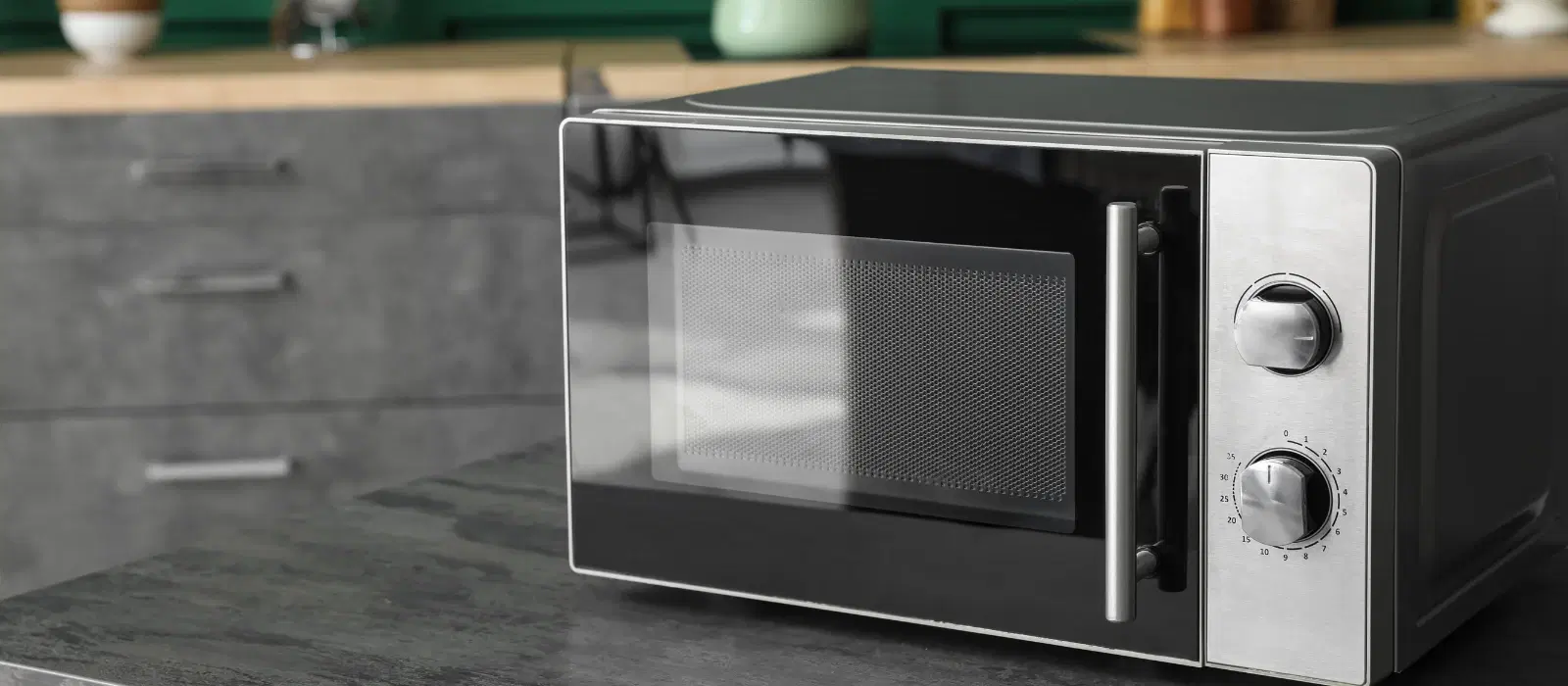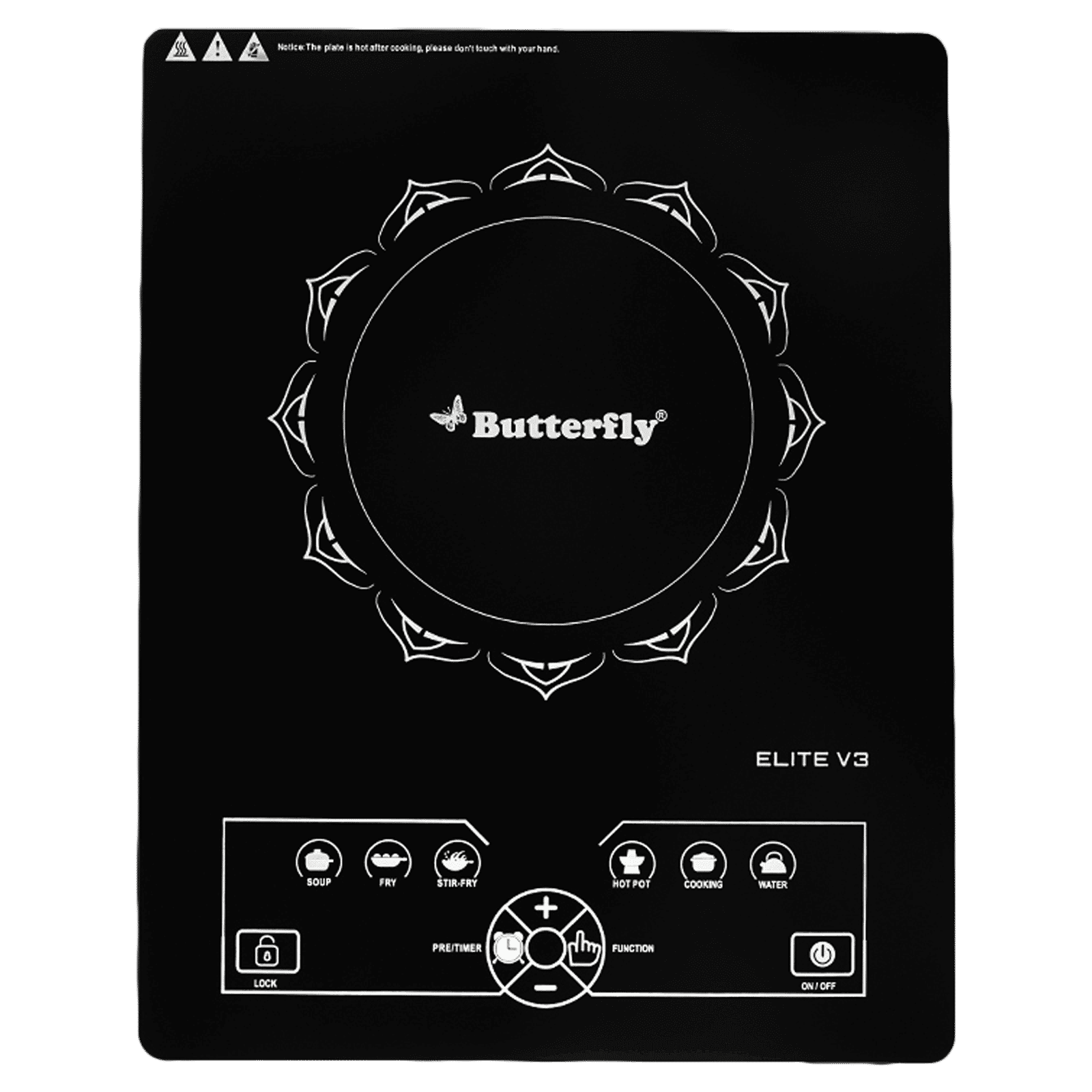
Home Appliances
•05 min read

Buy Butterfly Elite V3 2200W Single Induction Cooktop with 6 Cooking Menus online at best prices from Croma. Check product details, reviews & more. Shop now!
Imagine cooking meals faster, more evenly, and with better results—all while saving energy. Welcome to the world of convection mode. In today's post, we explore the transformative benefits of convection mode, a revolutionary cooking technology that harnesses the power of fans to circulate hot air, ensuring that every dish from baked goods to roasted vegetables turns out perfectly. Read on to discover expert tips, the science behind convection heating technology, and practical advice on adjusting recipes to unlock the full potential of your oven, microwave, and hybrid appliances.
Convection mode is a cooking setting that uses a fan to circulate hot air around the food. This enhances even heat distribution, setting it apart from traditional, static heating methods. Whether you are using an oven, a microwave, or a hybrid appliance, convection mode allows you to prepare meals with precision and efficiency. Its operation involves a meticulously designed airflow system that ensures every portion of your dish receives the same temperature treatment.
The secret behind convection mode lies in its unique mechanism. Convection ovens and microwaves use rapidly circulating hot air that results in consistent temperature distribution. This uniform cooking process not only translates to faster cooking times but also to a noticeable boost in energy efficiency, as appliances can operate at lower temperatures and for shorter durations compared to traditional methods.
Appliances equipped with convection mode offer a variety of settings to meet cooking needs. From convection ovens to convection microwaves, each appliance features specific symbols and settings that guide the user. You might find labels indicating convection bake or convection roast, each optimised for distinct culinary results. This technology is increasingly common, reflecting its growing popularity among tech enthusiasts and home cooks alike.
The benefits of convection cooking are multifaceted. With convection mode, dishes are prepared more evenly, thanks to the consistent hot air circulation. This not only enhances flavour and texture but also reduces cooking times significantly. Whether you are whipping up a batch of cookies or roasting a hearty meal, convection mode helps you achieve a superior outcome compared to using a regular oven.
A key advantage of using convection mode is its energy efficiency. By cooking at lower temperatures and for shorter times, it contributes to reduced energy consumption—a benefit that resonates with environmentally conscious and budget-minded chefs. The improved temperature control means that you get a perfectly cooked meal every time without overburdening your energy bill.
Certain foods are particularly well-suited to convection cooking. Roasted vegetables come out with a delightful crispy exterior, while baked goods benefit from even browning. Meats achieve a uniformly cooked texture, locking in juices for enhanced flavour. However, it is wise to avoid using convection mode for delicate dishes such as soufflés that may be sensitive to rapid air circulation.
Moving your favourite recipes to convection mode may require a few adjustments. It is generally recommended to reduce the cooking temperature by about 25°F and shorten the cooking time by 25% compared to traditional oven settings. For bakers, proper dish positioning is crucial; ensuring that there is ample space for air to circulate around each dish is key to preventing uneven cooking. Keeping these adjustments in mind will help you achieve perfection in every recipe.
Understanding the differences between convection bake and convection roast settings can lead to better outcomes in your kitchen. Convection bake is ideal for more delicate items like cookies, cakes, and pastries, where gentle heat is necessary. On the other hand, convection roast is better suited for heartier dishes, such as meats and vegetables, where a crisp, caramelised finish is desired. Knowing which setting to choose based on your dish will ensure that your meals always come out just right.
Using the right dishware and cooking tools further optimises the benefits of convection cooking. Choose pans and utensils designed to promote airflow; these are typically lightweight and have low sides for better heat distribution. Avoid overcrowding the kitchen equipment to maintain the effectiveness of the circulating hot air. These small adjustments in your kitchen setup can make a significant difference in your culinary results.
Here are a few actionable tips to help you make the most out of convection mode. Always preheat your appliance before placing food inside as this ensures that the temperature is stable and ready to work its magic. Keep an eye on your food during the cooking process, and consider rotating dishes midway through for even cooking. These steps are simple yet effective in using convection mode to its full potential.
Pro Tip from Tata Neu: Convection mode works best when you reduce the oven temperature by 25°F and cook for 25% less time than traditional settings. This simple adjustment can transform your results!
Avoid common pitfalls that can hinder your cooking performance. One frequent error is failing to adjust cooking times and temperatures, leading to overcooked or uneven dishes. Another mistake is using unsuitable cookware that restricts airflow. By staying mindful of these issues, you can ensure that your convection cooking experiences are consistently successful.
Baking with convection mode elevates your culinary creations to a whole new level. The even heat distribution bestows baked goods like bread, cookies, and pastries with a beautifully uniform texture and colour. Key practices include placing your dishes on the centre rack and ensuring that there is enough space around the pans to avoid overcrowding. These guidelines help in harnessing the full potential of convection mode while using convection oven settings for baking perfection.
Convection microwaves combine traditional microwave technology with the even heat distribution of convection mode. This dual functionality offers versatility for reheating, baking, and even roasting. A practical step-by-step guide includes preheating the microwave, setting the appropriate convection mode, and monitoring your food closely throughout the cooking process. Following these tips will allow you to make the most of your appliance’s unique features, ensuring that each dish is cooked to perfection.
No, while both involve circulating hot air, convection mode ensures even cooking whereas air fryer mode is specifically designed for crisp textures using rapid hot air technology.
Convection mode is best used for faster, more even cooking, particularly when roasting, baking, or browning foods.
The purpose is to enhance heat distribution which not only reduces cooking time but significantly improves food texture and flavour.
Foods such as roasted vegetables, baked goods, meats, and even casseroles benefit greatly from the even heat distribution provided by convection mode.
In summary, convection mode proves to be a versatile and energy-efficient cooking technique that redefines how we prepare our meals. By understanding how convection mode works, adjusting recipes to suit the unique characteristics of this technology, and following expert tips, you can elevate your home cooking to professional standards. This advanced cooking technology aligns with the aspirations of smart shoppers seeking quality, efficiency, and reliability. Enjoy a seamless cooking experience and explore the possibilities that technology brings to your culinary journey.